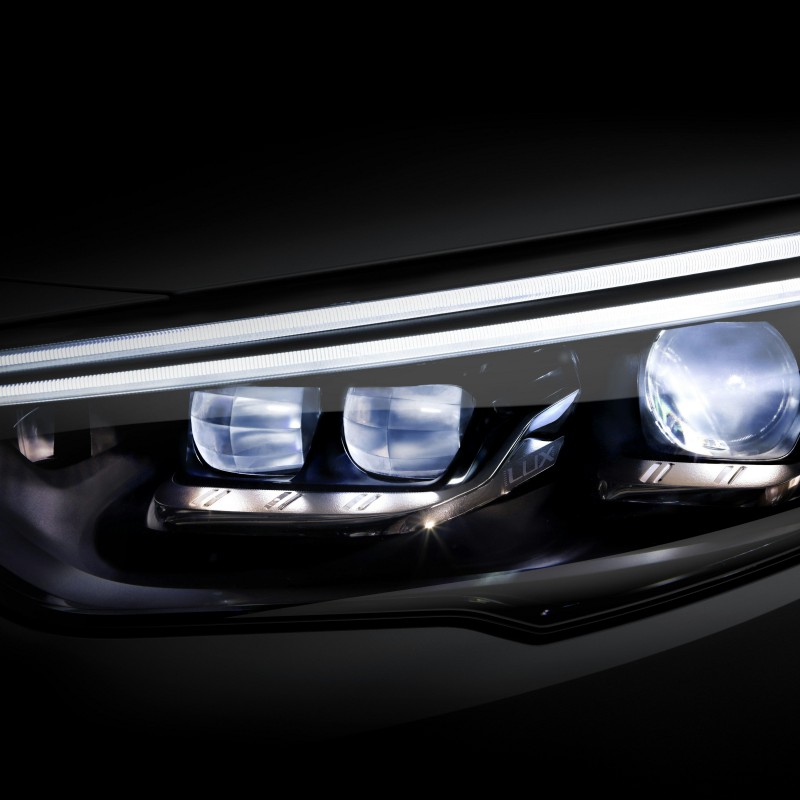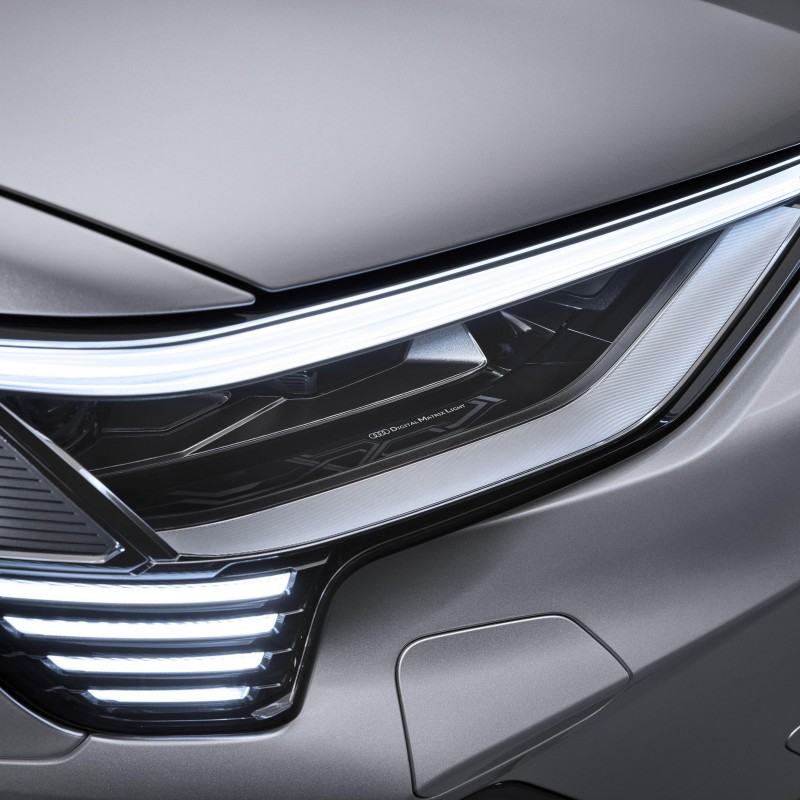In recent years, automotive technology has dramatically improved vehicle safety and performance, and one of the most significant advancements in lighting systems has been the introduction of adaptive headlights. Adaptive headlights are a game-changing innovation that enhances visibility while driving in various conditions. Unlike traditional headlights that merely illuminate a fixed area in front of the vehicle, adaptive headlights adjust their direction and intensity based on several factors, including vehicle speed, steering angle, and road conditions. This functionality allows for greater visibility when navigating curves, intersections, and even adverse weather conditions such as rain or fog. By providing improved illumination across a wider area, headlights contribute to safer driving experiences and reduce the risk of nighttime accidents. This article will delve into the technology and functionality behind headlights, their benefits, types, potential drawbacks, and what the future holds for this essential safety feature.
What Are Adaptive Headlights?
To understand headlights, it’s essential to define what they are and how they differ from conventional headlight systems. Traditional headlights typically project a fixed beam pattern. They do an adequate job of illuminating the road ahead but may not effectively light up the surroundings when driving on winding roads or during certain night-time maneuvers.
On the other hand, headlights are designed to dynamically adjust the angle and intensity of the light beam as needed. Utilizing sensors and motorized systems, these headlights follow the steering wheel’s direction, illuminating turns and curves effectively. Consequently, drivers gain a better view of the upcoming road conditions, allowing them to react promptly to obstacles, pedestrians, and other vehicles.
Key Features of Adaptive Headlights
Adaptive headlights incorporate several key features, including:
- Dynamic Steering Response: These systems pivot the headlights in the same direction as the steering wheel, providing extra visibility during turns.
- Speed Sensitivity: The headlights adjust their intensity and focus based on the vehicle’s speed. At higher speeds, the lights may project farther, illuminating more distant areas to enhance visibility.
- Cornering Lights: These lights activate when turning or changing lanes, offering improved illumination of the road’s edges and enhancing safety when navigating curves.
How Adaptive Headlights Work
To appreciate the importance of adaptive headlights, it’s essential to understand the technology that powers them. The functioning of headlights relies heavily on a combination of sensors, actuators, and sophisticated software algorithms.
Sensor Technologies
Adaptive headlights utilize a variety of sensors to gather real-time information about the vehicle’s speed, steering angle, and road conditions. Common sensor types include:
- Steering Angle Sensors: These sensors track the angle of the steering wheel, providing data on the vehicle’s intended direction.
- Speed Sensors: These instruments measure vehicle speed, allowing the system to adjust the headlights’ intensity based on how fast the vehicle is traveling.
- Ambient Light Sensors: These sensors assess the surrounding light conditions, prompting the headlights to adjust their brightness in response to changes in environmental lighting.
Actuator Systems
Actuators are mechanical devices that enable the headlights to pivot or rotate according to the data received from the sensors. These devices respond quickly and accurately, ensuring that the headlights illuminate where the driver needs them most.
Control Systems
Sophisticated software algorithms process sensor data and control signals in real-time to adjust the headlights accordingly. The system responds promptly to changes in steering input, vehicle speed, and light conditions, optimizing visibility and enhancing safety.
Benefits of Adaptive Headlights
The integration of headlights comes with several benefits that enhance overall driving safety and comfort:
Enhanced Visibility
One of the most significant advantages of headlights is improved visibility during nighttime driving. As the headlights pivot and adjust to the steering angle, they effectively illuminate turns and winding roads. This feature reduces the risk of accidents by ensuring drivers have a clear line of sight.
Increased Safety
With better visibility comes increased safety. Adaptive headlights enable drivers to identify obstacles, pedestrians, and road hazards much earlier than traditional systems. This early detection provides crucial time to react appropriately, especially in low-light scenarios.
Reduced Glare
Adaptive headlights include features that minimize glare for oncoming traffic. The ability to adjust the light intensity and focus contributes to a more comfortable driving experience for both the driver and other road users.
Improved Light Distribution
Unlike traditional headlights, which provide a fixed beam pattern, adaptive headlights maximize the illuminated area. This feature is particularly useful when navigating rural roads, curved highways, or poorly lit areas.
Types of Adaptive Headlight Systems
Numerous adaptive headlight systems are available in modern vehicles. Below are some common types:
AFS (Adaptive Front Lighting System)
AFS systems are designed to illuminate the road according to the vehicle’s speed and steering angle. By pivoting the headlights in the direction of the turn, AFS enhances cornering visibility and safety during nighttime drives.
LED Adaptive Headlights
Many newer vehicles are equipped with LED adaptive headlights, which offer precise control over light distribution. LED technology allows for faster response times and greater energy efficiency compared to traditional halogen bulbs.
Matrix Headlights
Matrix headlights utilize multiple small lighting segments that can be activated or deactivated independently. This technology allows for precise illumination patterns tailored to specific driving situations, such as approaching oncoming cars or pedestrians.
Potential Drawbacks of Adaptive Headlights
While adaptive headlights provide numerous benefits, they are not without their drawbacks. Being aware of these limitations can help drivers take advantage of the technology while understanding its constraints.
Higher Costs
Adaptive headlight systems are more complex than traditional headlights, which often translates to higher initial vehicle costs. Additionally, repairs or replacements of adaptive systems can be more expensive due to the intricacies involved in their design.
Calibration and Maintenance
Adaptive headlights require regular calibration to ensure they function correctly. If the system becomes misaligned or impaired due to damage, recalibration may be necessary. This maintenance may not be readily available in all service centers, leading to inconvenience for some drivers.
Sensor Limitations
The effectiveness of adaptive headlights relies heavily on proper sensor function. In inclement weather conditions such as fog, heavy rain, or snow, sensors can be impeded, resulting in reduced performance. Drivers should remain vigilant and adjust their driving habits accordingly.
The Future of Adaptive Headlight Technology
As automotive technology continues to advance, adaptive headlights are likely to become more sophisticated and integrated into broader safety systems. Here are some potential future developments:
Integration with Autonomous Vehicles
As vehicles shift towards automation, adaptive headlights will likely evolve alongside autonomous driving technologies. Future systems may leverage artificial intelligence algorithms to optimize light distribution based on real-time navigation and environmental data for enhanced safety.
Enhanced Connectivity Features
Vehicle-to-vehicle (V2V) and vehicle-to-infrastructure (V2I) communication technologies are developing rapidly. Integrating adaptive headlights with these systems could enable headlights to respond to external cues, providing even greater safety features tailored to specific driving scenarios.
Advanced Optical Technologies
Research into new optical technologies might lead to developments in light modulation and adaptive focus capabilities. Such enhancements could improve light quality and performance, ensuring maximum visibility without blinding other drivers.
Implementation in Different Vehicle Types
The adoption of adaptive headlights varies across different vehicle types, showcasing the technology’s versatility and benefits:
Luxury and High-End Vehicles
Luxury car manufacturers have been among the primary adopters of adaptive headlight technology. Brands such as BMW, Audi, and Mercedes-Benz have integrated advanced systems to enhance safety and comfort. Their offerings often include premium features like matrix or laser headlights.
Mid-Range Models
As technology becomes more accessible, mid-range vehicles have started incorporating adaptive headlights. Brands like Toyota, Honda, and Ford offer adaptive options in certain models, focusing on improving overall safety during nighttime driving.
Commercial and Fleet Applications
Adaptive headlights are beginning to find applications in commercial vehicles and fleet operations. Enhancing safety for drivers delivering goods or transporting passengers can lead to improved operational efficiency and reduced accident rates.
Conclusion
The integration of adaptive headlights represents a significant advancement in automotive technology, enhancing safety and visibility for drivers on today’s roads. By dynamically adjusting to driving conditions, these innovative systems provide a safer and more comfortable driving experience, particularly during nighttime or adverse weather conditions. Understanding how adaptive headlights work, their benefits, and the different types available can help consumers make informed decisions when purchasing vehicles.
As technology continues to evolve, so too will adaptive headlights, paving the way for more innovative features designed to promote safe driving. The future may hold further enhancements, including integration with autonomous driving systems and advanced connectivity technologies. Ultimately, as adaptive headlights become a standard feature in more vehicles, they promise to make our roads safer for everyone.